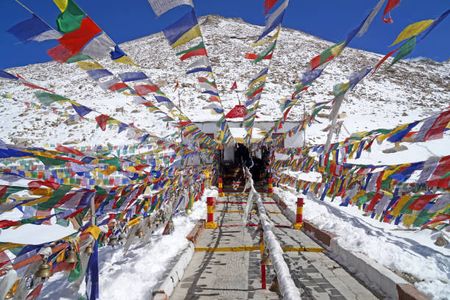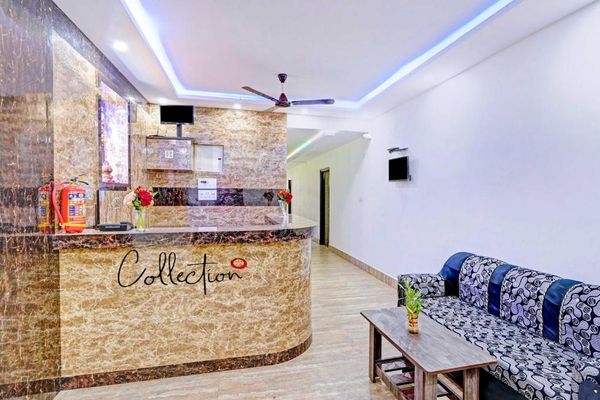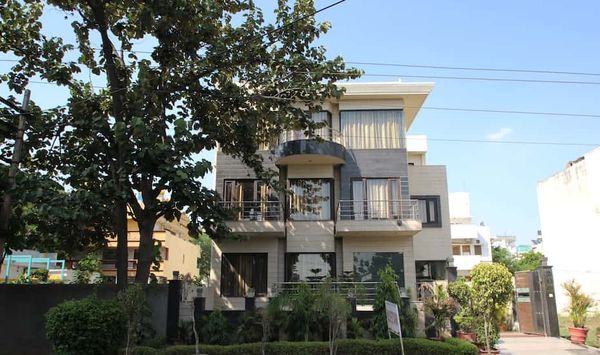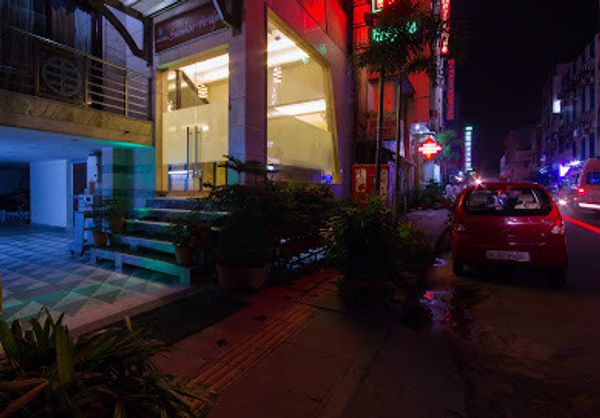Monasteries in Leh Ladakh: Buddhist Monasteries in Leh Ladakh
 Sujeet Kumar
24 Jan, 2025
13 mins read
420
Sujeet Kumar
24 Jan, 2025
13 mins read
420

A trip to Leh Ladakh would not be complete without visiting its centuries old grand and majestic monasteries. Apart from being symbols of spiritual and religious significance, these beautiful monasteries have been a cradle for preserving and nurturing native faith, culture, tradition, and language. By visiting these monasteries, you can learn about the Ladakhi way of life and their faith. Adorned with thangkas (prayer flags), artefacts, wall murals, and mandalas, these monasteries narrate the teaching of Tibetan Buddhist philosophies.
Built in Tibetan architecture style, these gompas are temple complexes with stupas, courtyards, assembly halls, libraries, prayer room, and gallery. Spend time in monasteries of Ladakh to learn how monks live their lives and practice a disciplined lifestyle. Witness the monastic festivals which are held annually at monasteries of Ladakh which is a huge part of Ladakh tourism. Seek tranquillity by meditating at a monastery and feel a sense of spiritual rejuvenation inside you.
5 Best Monasteries to Visit in Leh Ladakh
Although there are many monasteries in Leh Ladakh, we have covered the top 5 which you can easily visit during your Ladakh trip. Read below to learn more about Leh Ladakh monasteries.
1. Thiksey Monastery
Located 19 kilometres away from Leh, lies Thiksey monastery perched on a hilltop overlooking the entire Indus valley and the breathtaking Stok mountain range. It is one of the largest monasteries in central Ladakh and one of the most significant ones as well. The Thikesey monastery was founded by Spon Palden Sherab in the fifteenth century under the guidance of his teacher, Jangsem Sherab Zangpo.
Thiksey monastery is associated with Gelug school of Tibetan Buddhism (identified by their
yellow hat). This school is known for its reformist teachings and strict monastic discipline. The intention behind establishing this monastery was to spread the teachings of Je Tsongkhapa to the remote and distant regions of Ladakh. The Thiksey monastery is built in an architectural style similar to Potala Palace in Lhasa. It houses 10 temples and the main attraction here is the three-story-high Maitreye Buddha, who is hailed as the future Buddha who will disseminate the teachings of enlightenment. This monastery also celebrates its annual festival called Gustor in the ninth month of the Tibetan lunar calendar.
Where to stay near Thiksey monastery?
You can book a room in a nearby hotel, stay at a comfortable campsite, or simply lodge in Thiksey monastery guest house.
2. Hemis Monastery
Hemis Mostery is hailed as one of the most beautiful, richest and significant monasteries in Leh Ladakh. Located 45 km to the south of Leh, the Hemis monastery (Gompa) was founded by the Kashmiri Buddhist Saint Naropa and later it was re-established by the Ladakhi king Sengge Namgyal. This Himalayan Buddhist monastery is associated with the Drukpa Lineage of Buddhism.
The exterior of the monastery is painted in white hues and is decorated with prayer flags. The main attraction of the monastery is the statue of Guru Rinpoche (Padmasambhava), which is 8 metres high. One of the fascinating sights at the monastery is the courtyard which leads to a gallery of paintings dating back to the 17th century. These paintings belong to the eighty-four mahasiddhas and were created from pigments derived from minerals. As you explore more of Hemis monastery, you will find the two assembly halls in the monastery with guardian deities and Wheel of Life.
The monastery also houses Tibetan books, manuscripts, thangkas, stupas with precious stones, and other artefacts. One of the highlights of the monastery is its Hemis Festival which takes place in the month of July and here you can view the esoteric Cham dance (masked dance to ward-off evil).
3. Alchi Monastery
If you want to witness the profound Ladakhi architecture and craftsmanship, head to Alchi monastery, known for its paintings, murals, and vibrant statues. Located in Alchi village, and about 60 kilometres away from Leh district, this Buddhist establishment is actually a monastic complex (chos-'khor) of temples. The monastery was founded by Lotsawa Chenpo or the "Great Translator” Guru Rinchen Zangpo and the various temple complexes were constructed between 11th and 13th century. This monastery houses some of the oldest surviving Kashmiri and Buddhist paintings and the influence of two styles is evident from its architectures and interiors. Upon exploring the interior of the monastery, you will witness opulent wooden work, clay images, facades and paintings. The variety of paintings on monastery’s walls depicts nuanced designs, colourful frescoes, mandalas, kings on horses, deities, and depictions of Buddhist teachings which provides a glimpse into the tenets and philosophies of Tibetan Buddhism.
The Alchi monastery complex has three significant shrines, including the Dukhang (Assembly hall) which has the Wheel of Life, the Sumtsek and the Temple of Manjushri. It is believed that all these shrines were established between the 12th century and 13th century. You will also see Chortens (small stupas) that were added in the late 14th century. The monastic festival celebrated at this monastery is called the Alchi Gustor festival which falls in either January or February.
4. Likir Monastery
The Likir monastery is located 52 kilometres to the west of Leh and is perched at an altitude of 3700 metres elevation. The monastery is situated in Likir village in close proximity to the Indus river. Established in the 11th century, the Likir monastery is affiliated with the Gelugpa sect of Tibetan Buddhism. It was founded by Lama Duwang Chosje on the orders of the fifth king of Ladakh, Lhachen Gyalpo. Set on a hillock and surrounded by lush greenery, the exterior of the monastery looks absolutely stunning in the bright daylight.
The main attraction of the Likir monastery is the awe-inspiring 75 feet statue of Maitreya Buddha towering over the monastery. On the temple walls you will find a colourful mural of Mahakal (the protector deity), along with hand-painted mandala, Wheel of Life, painting, thangkas, and murals. Once you reach the monastery's courtyard, you will be headed to Dukhang (the assembly hall), two large chortens are located at the front of the hall, housing statues of Avalokitesvara and Amitabha. Gonkhang temple and Monastery museum are the other highlights of this establishment.
Where to stay and how to reach Likir monastery?
For those looking for accommodation, a guesthouse is available in the close proximity of the monastery, which is ideal for a one-night stay. The best time to visit the Likir monastery is between May and September. A road trip from Leh to Likir Monastery will take approximately one hour and thirty minutes.
5. Lamayuru Monastery
Nestled in Lamayuru, Leh district, Lamayuru monastery is said to be the oldest and the largest monastery in Ladakh. Lamayuru has always attracted tourists due to craters in its land due to a geological formation. This geological formation has earned Lamayuru the title of “moonland”. And whosoever visits Lamayaru can’t resist themselves from visiting one of the major attractions here—the Lamayaru monastery. This monastery is just 15 kilometers from Leh-Manali highway and is located at an altitude of 3510 metres. Lamayuru Monastery is affiliated with the Kagyu school of Tibetan Buddhism (identifiable by their black hats). The interior walls of the monastery are adorned with colourful paintings, depicting deities and daily monastic life.
In the second and fifth months of the Tibetan lunar calendar, the Lamayuru monastery hosts two annual Cham dances (masked dance festivals), and the monks gather around the gompas to pray and chant. As per the Georgian calendar, the festival takes place in June or July.
How to reach Lamayaru monastery and where to stay?
From Leh district, one has to take a taxi and cover an approximate distance of 115 kilometres to reach the Lamayaru monastery. As far as accommodation is concerned, you will find many guesthouses in Lamayaru village.
These are the top five Buddhist monasteries in Leh Ladakh that you must visit on your Leh Ladakh tour. These monasteries aren’t mere tourist attractions, but a testament to the long standing culture and heritage of Ladakh that has been carefully preserved by its people.
Written By:
Sujeet Kumar



Hotels at your convenience
Now choose your stay according to your preference. From finding a place for your dream destination or a mere weekend getaway to business accommodations or brief stay, we have got you covered. Explore hotels as per your mood.





